Brief

At a Glance
- With Covid-19 disruptions forcing consumers to interact digitally with insurance agents, a growing share of consumers Bain surveyed found those interactions to work well. Yet many others reported that their insurer’s digital system is difficult to use, provides poor support, or takes too long.
- Customer preferences aren’t the only factor for embedding virtual services by agents, as virtual can eliminate unnecessary travel, real estate, and in-person meetings.
- Most consumers prefer hybrid digital-human services, so insurers that get the hybrid mix right will be better positioned to please current customers and acquire new ones.
- A set of high-gain questions will help executives design and execute a powerful hybrid advisory model.
The Covid-19 pandemic and subsequent shutdowns forced many people to adopt digital means of communicating and interacting with their insurance agents. Over the past year, about 40% of consumers globally surveyed by Bain used a virtual channel, such as Zoom video software, at least once to interact with agents through such channel (see Figure 1).
Virtual is emerging as the new channel of choice for many insurance consumers
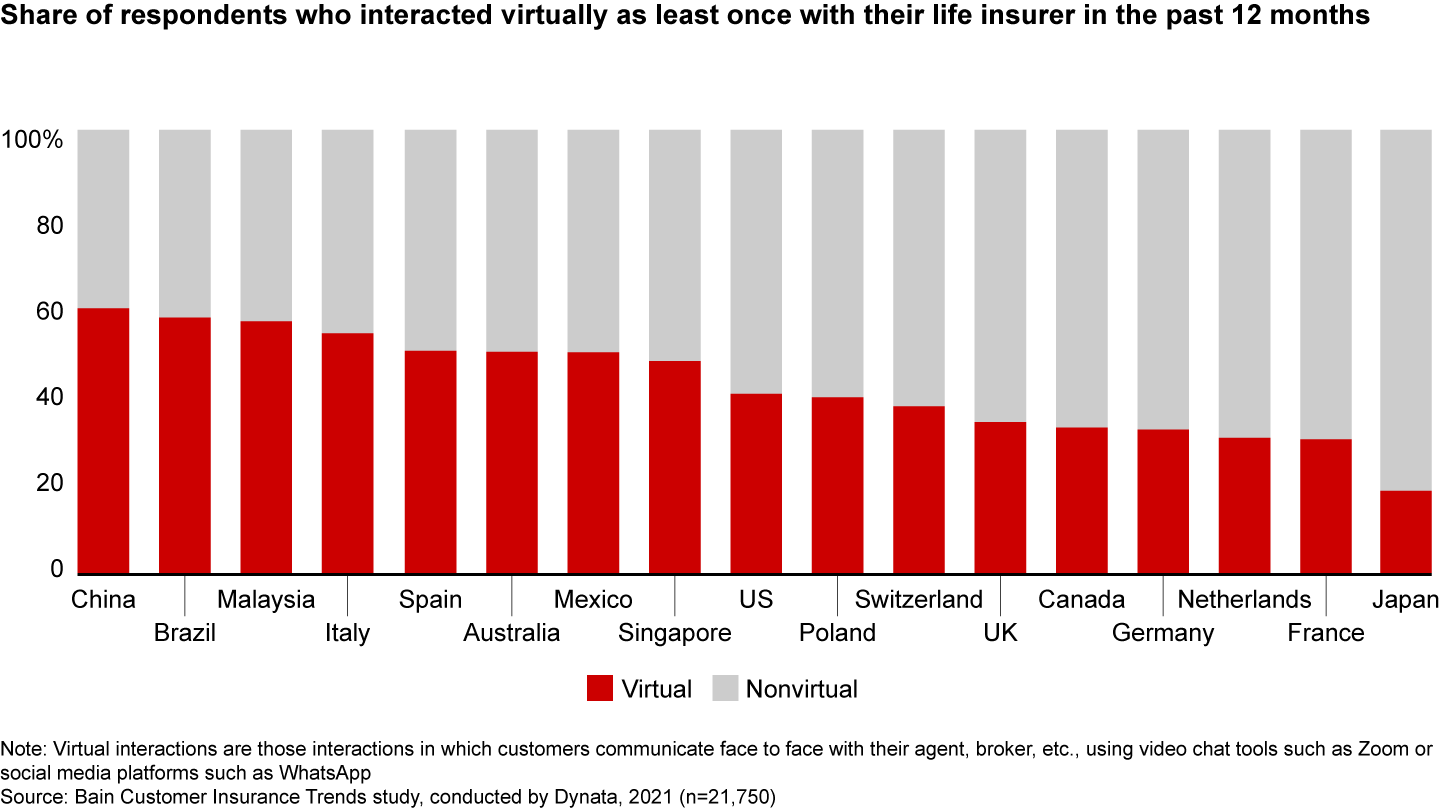
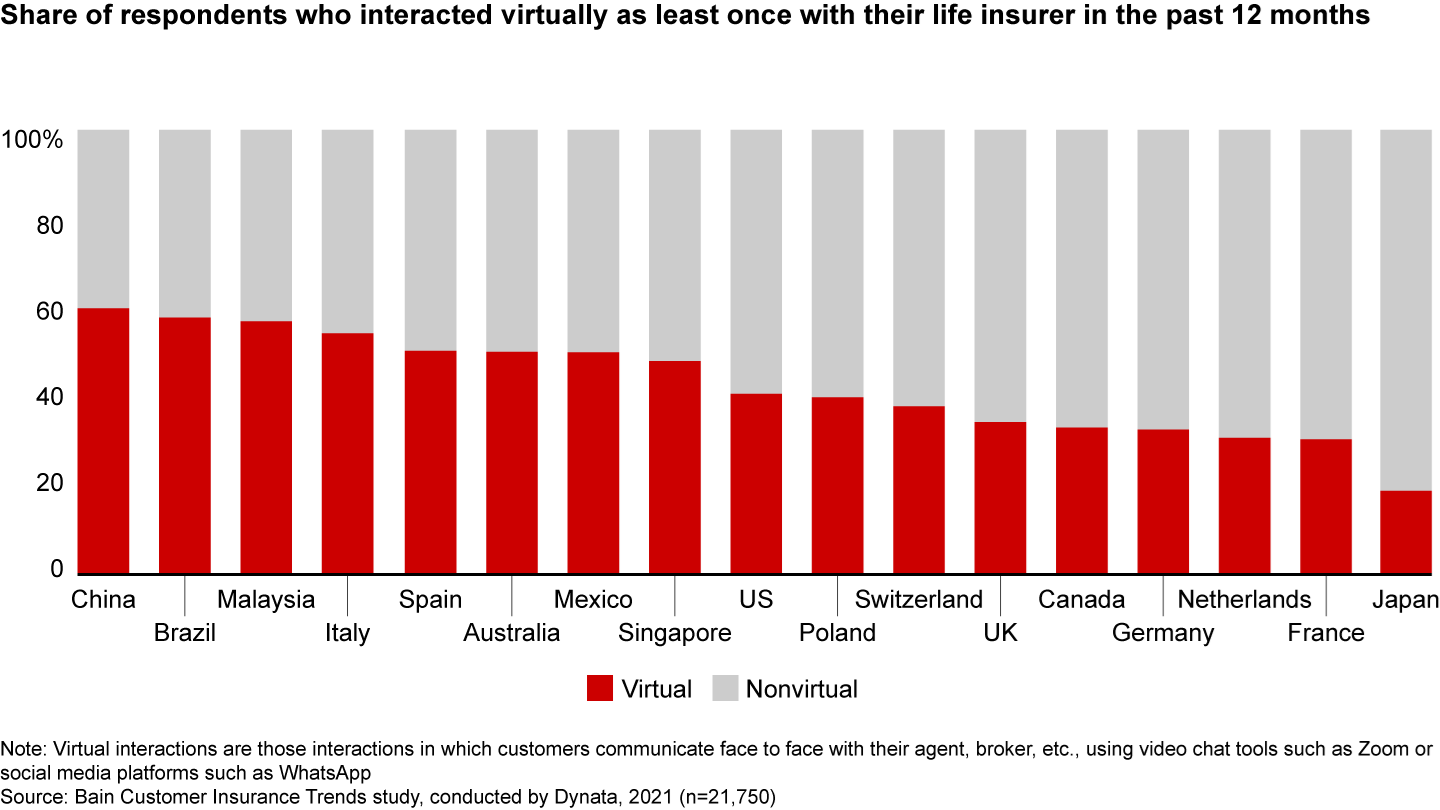
This turned out to be a kick in the pants for insurers. Those who had robust or even just decent digital agency channels won over a broad swath of their customers, while companies with balky, cumbersome virtual channels suffered a decline in their customers’ perception. What once appeared to be a distant goal for insurance agent organizations—seamless virtual interactions with customers—has become a standard expectation among consumers and thus more urgent for insurers to deliver. Developing strong virtual systems that have broader appeal can be tricky, though, especially when it comes to earning people’s trust.

About the Research
Data powered by Dynata, a leading global first-party data and insights platform.
Bain’s survey of 21,750 consumers in 21 countries, conducted by Dynata, found that 42% had a very favorable perceptions of digital interactions with agents, compared with only 18% in 2018. Yet many other respondents became detractors, because their insurer’s digital system is difficult to use, provides poor support, or takes too long (see Figure 2).
During the pandemic, more customers have given high marks to digital insurance channels, but others encountered problems
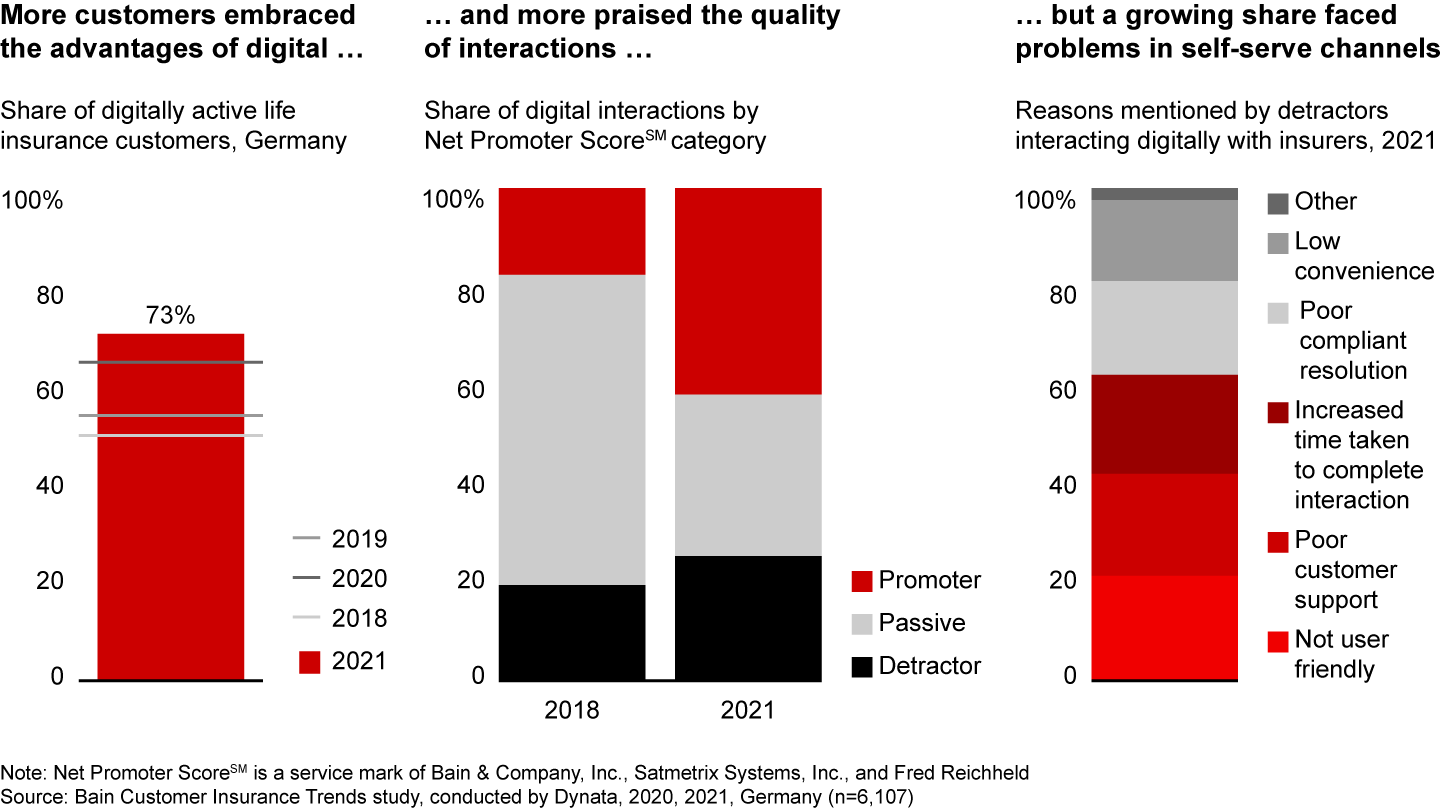
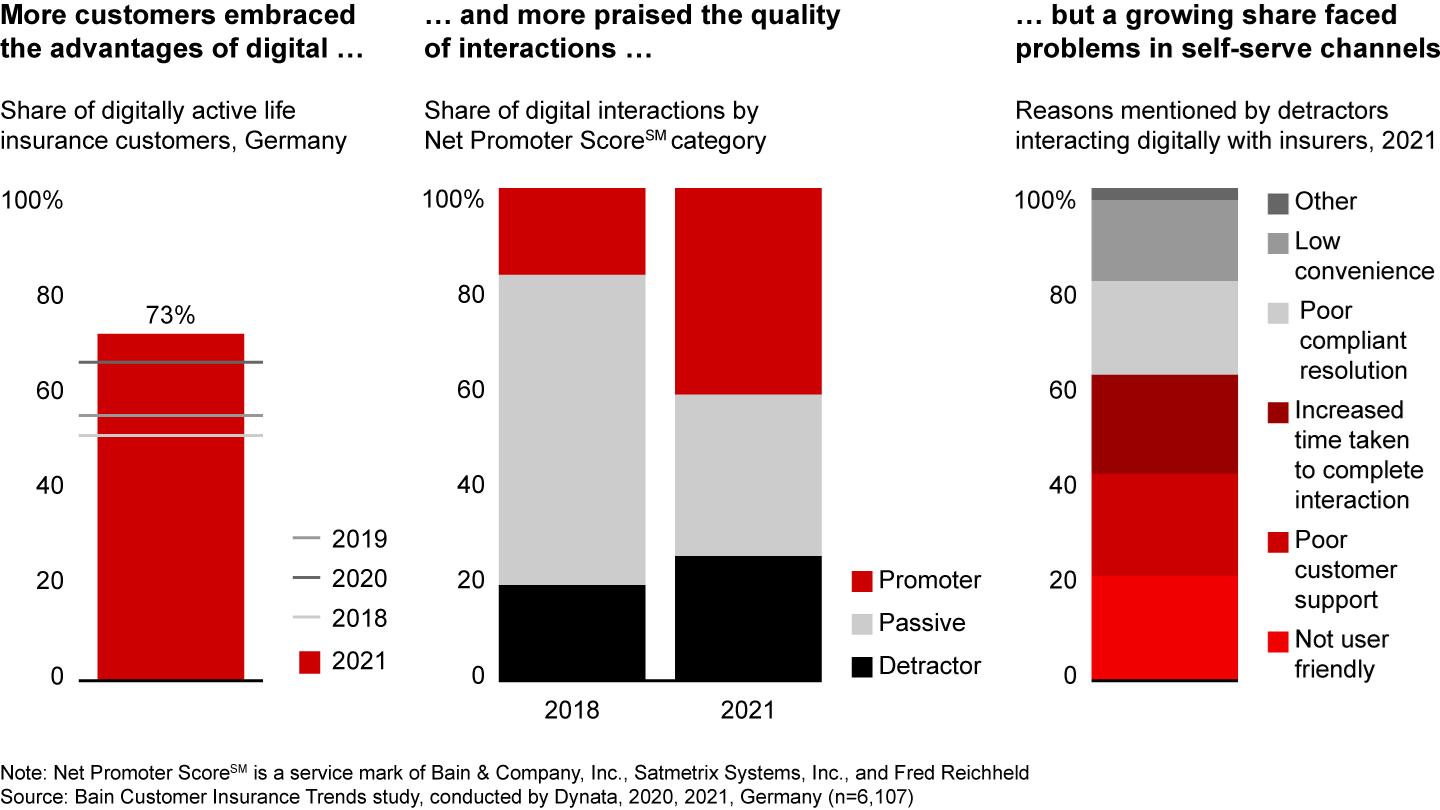
Virtual interactions and advice clearly have become established practice, complementing other channels in a hybrid distribution model that blends remote and in-person interactions. Globally, 51% of life insurance respondents said they plan to continue using video chat in the future (see Figure 3). This preference applies across all age groups. In the US, for instance, 61% of respondents age 55 and older who used virtual channels for life insurance over the past year plan to continue doing so.
More customers are willing to interact virtually with their insurers in the future
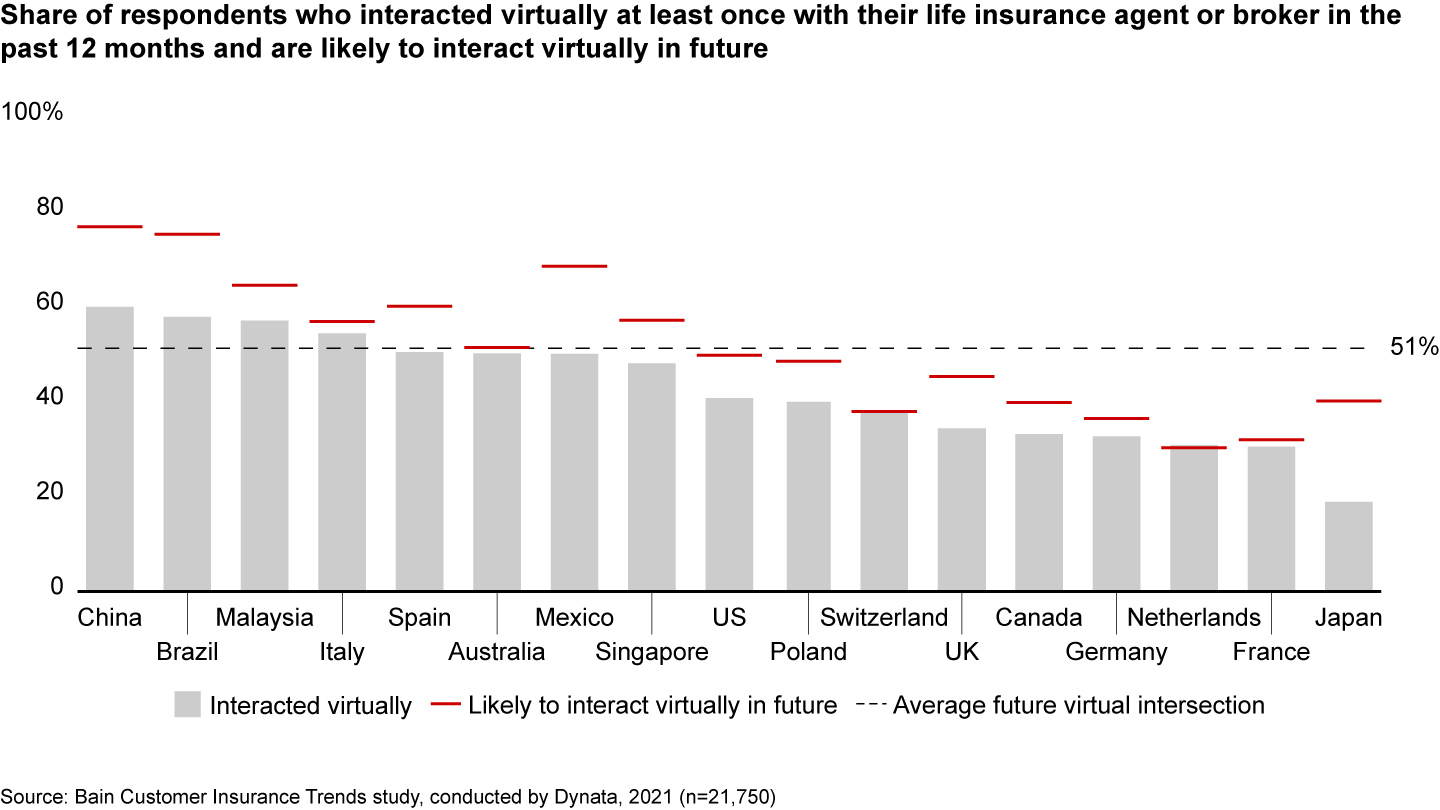
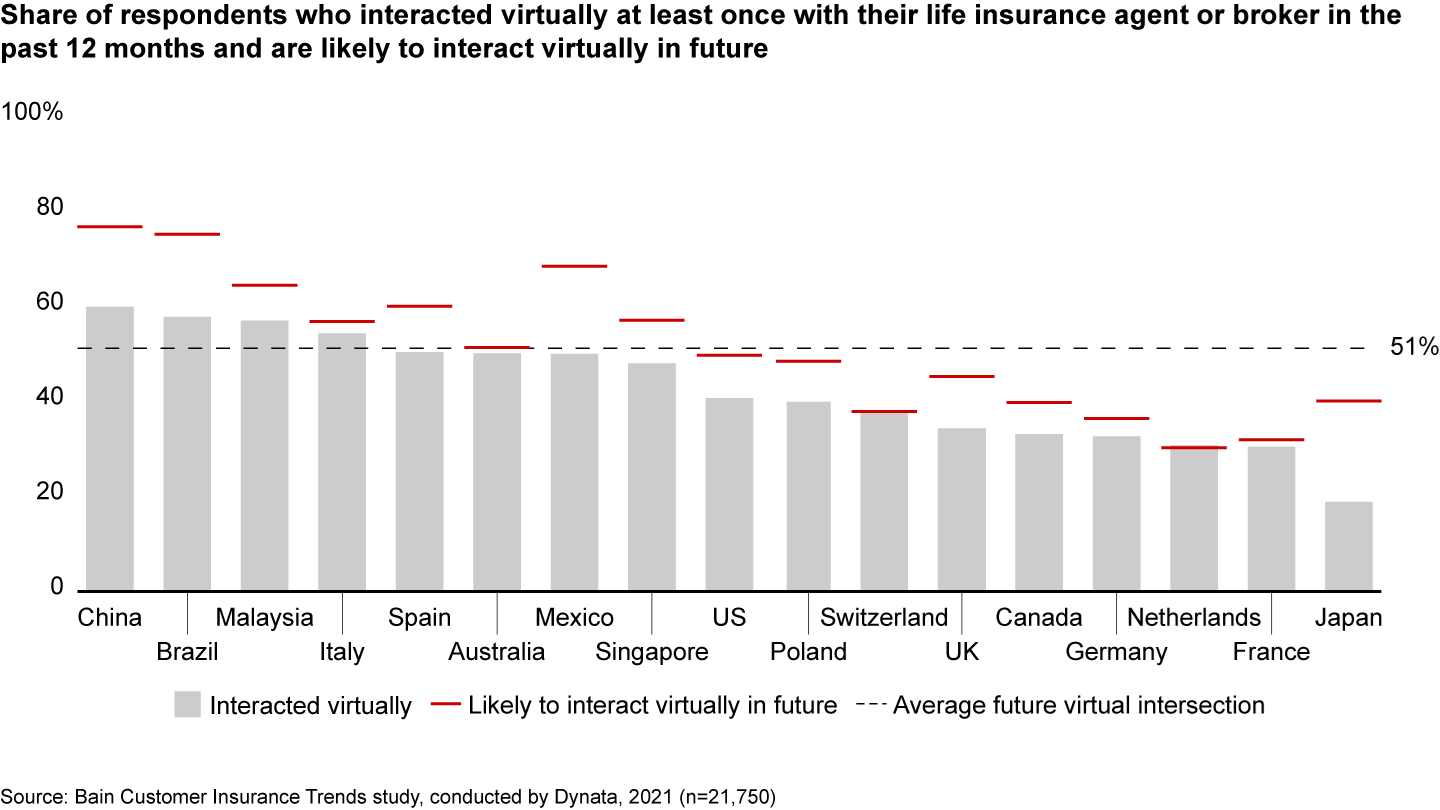
Improving the economics
Customer preferences aren’t the only reason for embedding virtual services by agents. Economics also come into play. Distribution costs for life insurers, for example, typically account for around half of operating expenses. Insurers and agencies that have successfully implemented virtual capabilities report notable gains in efficiency, by eliminating unnecessary travel and in-person meetings, and enabling advisers to spend more time identifying and connecting with prospects. Similarly, there’s more time to invest in active advice and personalized interactions with existing customers, such as automatic alerts on life events like the birth of a child.
Over the past year, a number of insurers have realized the benefits of virtual channels. In Asia, Prudential created an end-to-end virtual sales submission process, with a virtual recruitment and onboarding process for distributors. This allowed agents to handle more business, as the number of cases per active agent rose 8% in 2020.
Similarly, AIA saw a 25% increase in the value of new business through its agency channel in the first half of 2021, and a 15% increase in the value of new business per active agent. AIA made strides by digitally enabling the entire agency force, with real-time activity management, performance alerts, integrated policy administration systems, summary dashboards, customer purchase propensity insights, and gamified training to enhance skills.
Improving the customer’s experience
Advice through virtual channels can blend the best of easy digital transactions with the more personalized dialogue available when face to face. Across key types of interactions—research, purchase, service, and claims—US survey respondents give their life insurer on average a 20 percentage point higher Net Promoter Score℠ when their interaction involved remote video chats, compared with no such chats (see Figure 4). Ease of access, convenience, and customized support are the main reasons cited by respondents for why they value remote advice.
Across different episodes, virtual channels tend to engage consumers more effectively than other channels
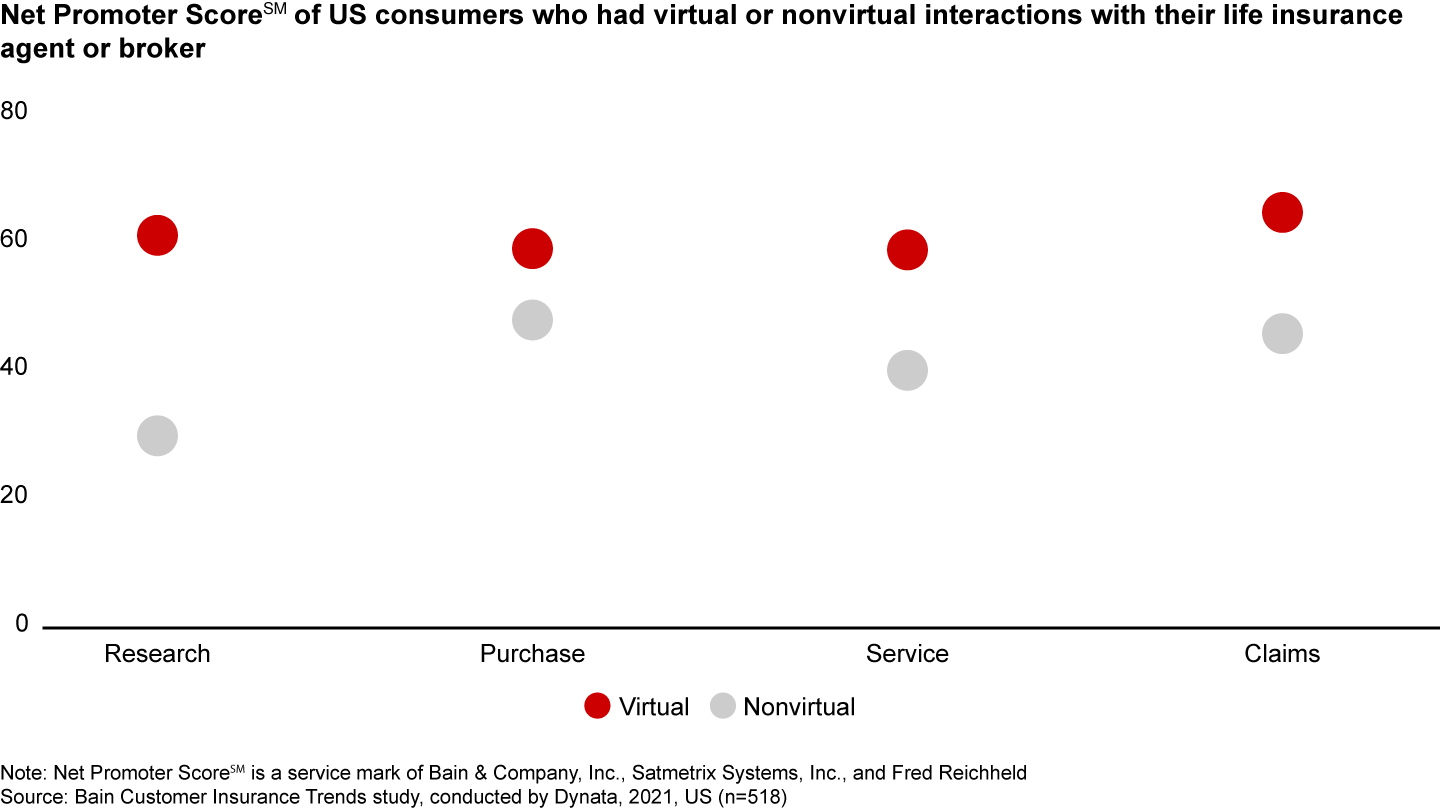
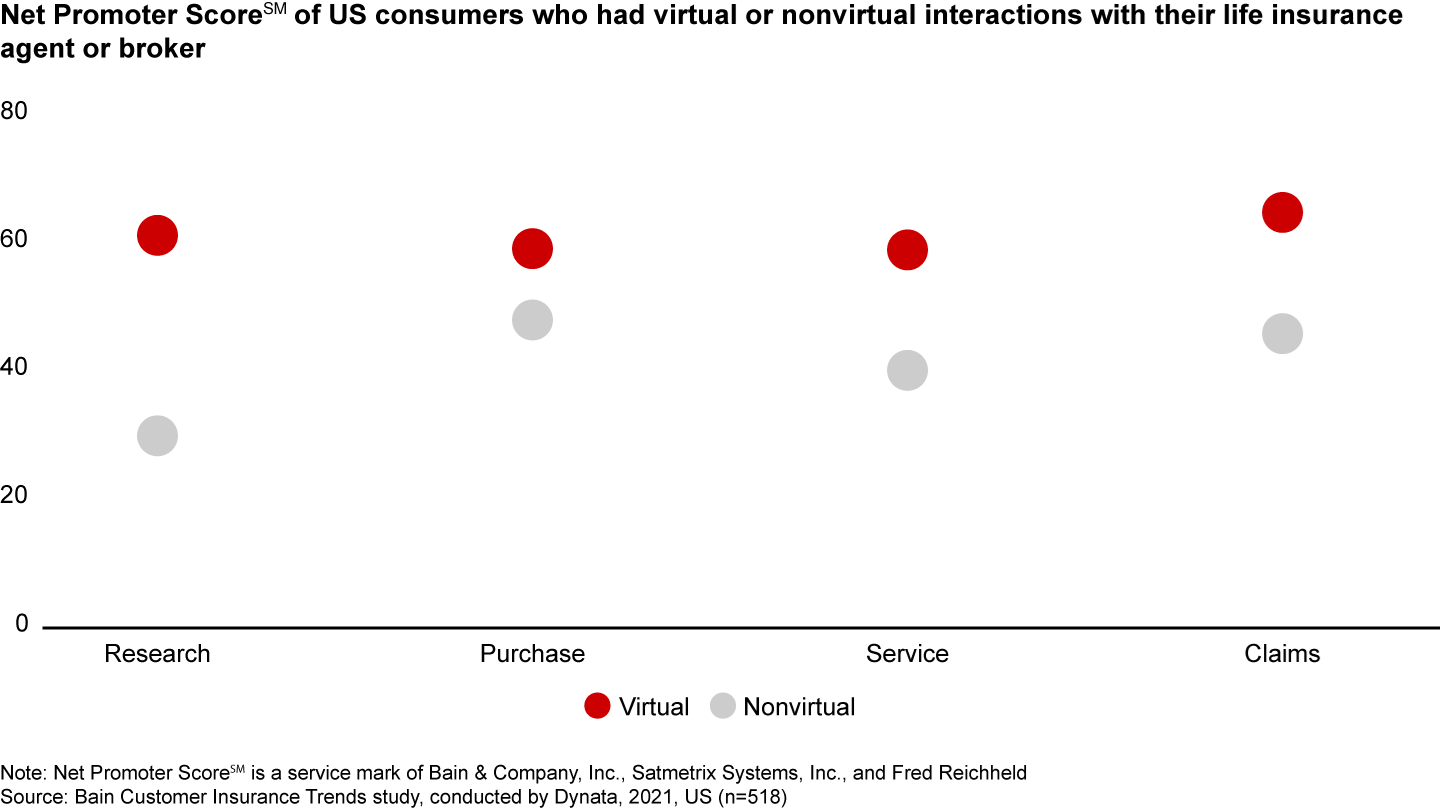
Gaining consumers’ trust remotely, however, remains a difficult task. Of the respondents in Germany who preferred in-person interactions, 31% highlighted trust as the key reason.
Yet insurers can bridge the trust gap, if they get the mix of virtual and human channels right. Survey respondents purchasing a life insurance product the first time via hybrid channels gave a 27 percentage point higher Net Promoter Score than new customers who did not have any remote interactions (see Figure 5).
Consumers prefer hybrid channels to digital only or human only
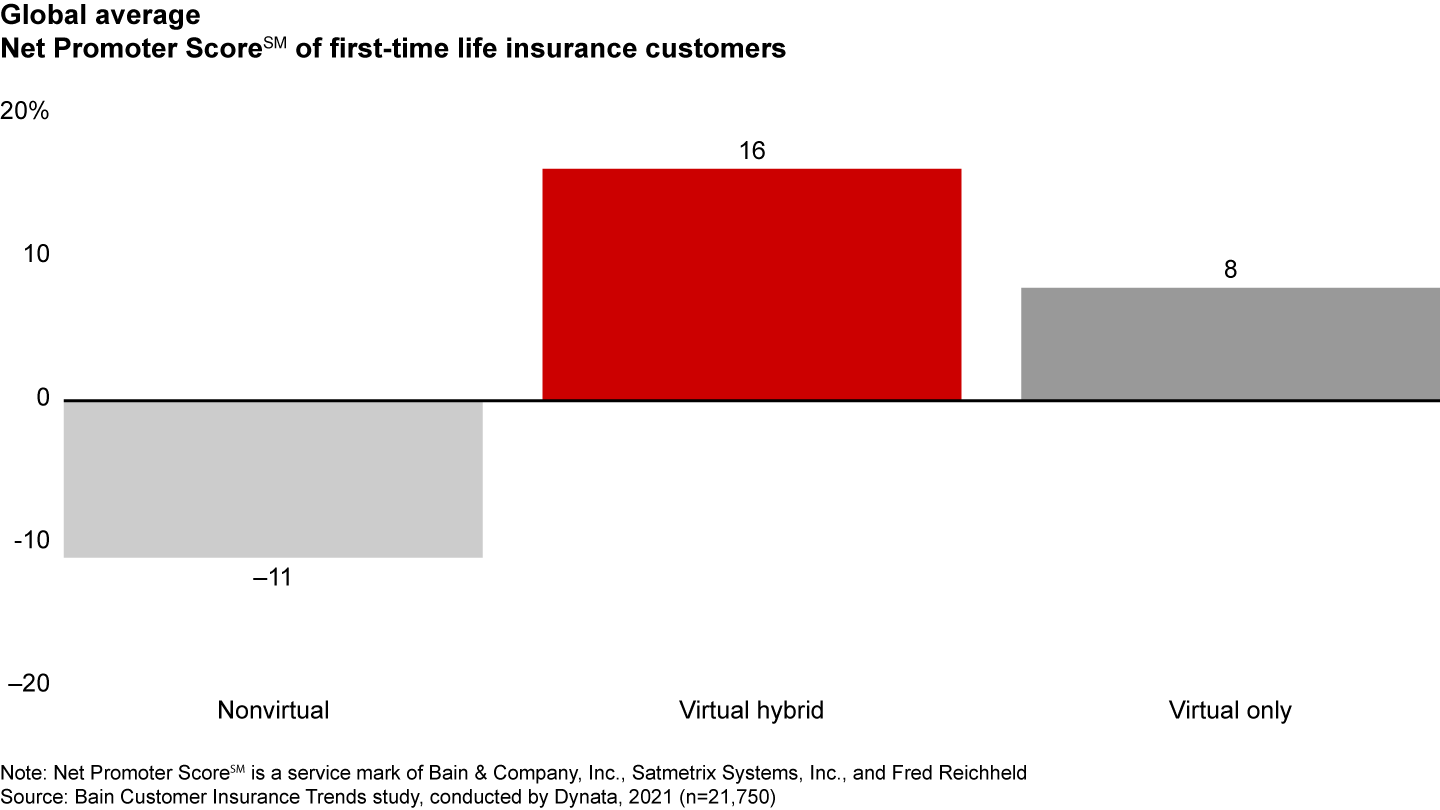
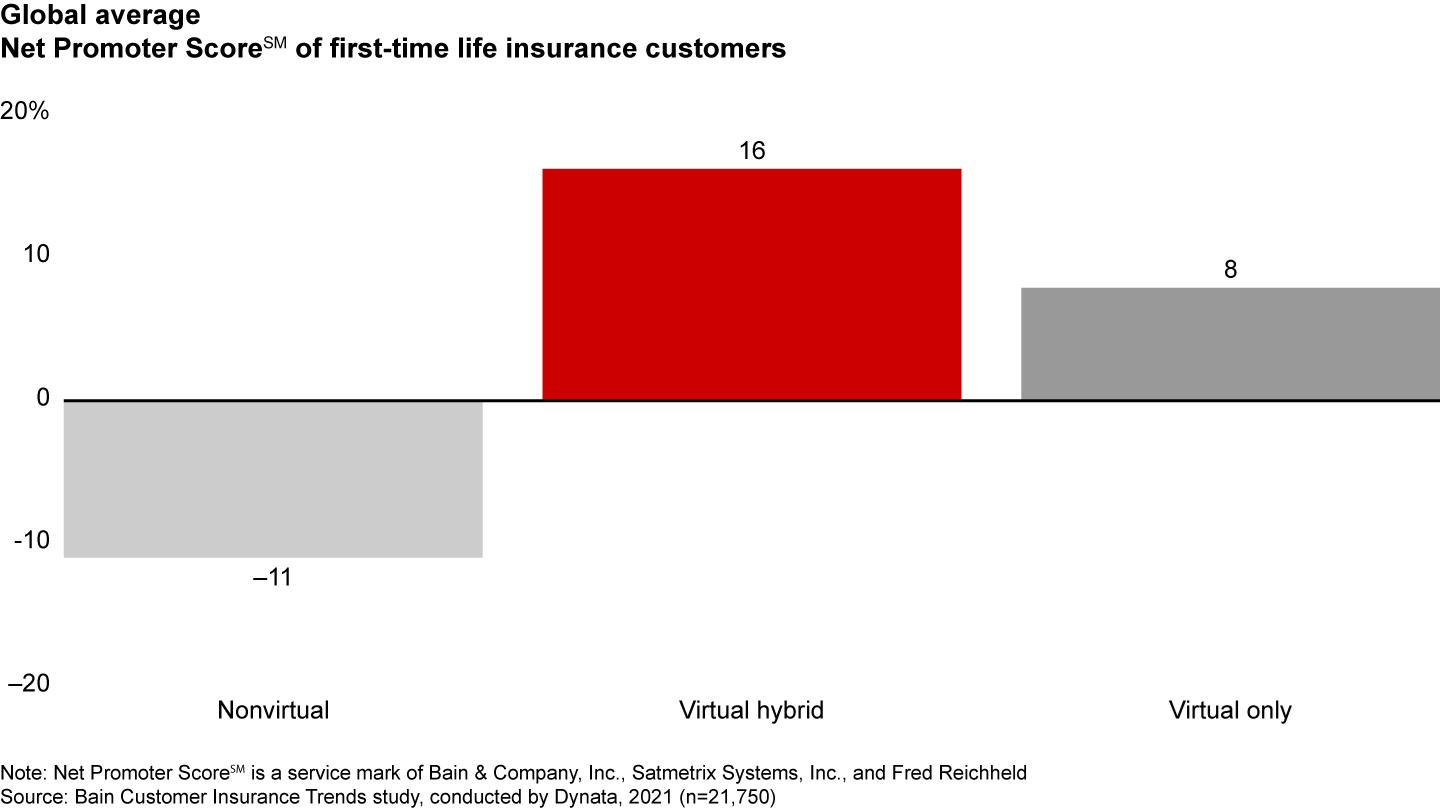
Questions to shape the next steps
To evolve distribution into a powerful hybrid model, insurers, agencies, and brokers entails moving beyond incremental change. Covid-19 forced many advisers to make do with their existing tools to conduct business remotely. For instance, they took tablets that were originally designed for co-browsing in person with customers to show product offerings and used them to conduct video calls. Such improvisation led to a less engaging experience for customers.
An effective future advisory model will rely more on virtual channels permanently. Despite the great variety of country and product markets, they all have an opportunity to step up productivity and tighten customer relationships through a hybrid model. To develop their model and execute it well, senior executives should address the following considerations.
- How quickly and how far should we move? Individual markets vary greatly in their digital readiness. Consumers in many Asian countries routinely use mobile digital channels for all kinds of commerce, including insurance. Generally speaking, Asian insurers recognize the need to go very far, very quickly. In Thailand and Singapore, a separate Bain survey found that consumers want more high-quality advice from insurance agents, so insurers will need to figure out how to improve remote advice.
By contrast, consumers in much of continental Europe have been slower to adopt mobile channels. Bain’s digital benchmarking in France found that insurers put digital tools in the distribution network, but that an average of just 15% of customers use them, vs. 60% for global leaders. The challenge in Europe, then, is to systematically raise awareness among both consumers and agents, instill trust, and provide incentives to shift to virtual channels. Incumbent insurers may also feel pressure from the likes of Alan, a French health insurance mobile app, which recently raised a €185 million funding round at a €1.4 billion valuation, and as of April covered 160,000 people.
- Will our agents need different skills and competencies? Agents will increasingly focus on providing high-quality advice around the broader proposition, which includes an ecosystem of services provided by partners. Companies will need to equip agents with the right training, tools, metrics, coaching, and incentives to excel in remote advisory. Certain behaviors may need to change as well, such as adopting new tools, learning new capabilities such as data analytics and digital marketing, or establishing emotional connections with customers during video calls.
- What technology capabilities will we need? Most distribution organizations lack the ability to perform advanced data analytics, which has become more important for virtual and hybrid interactions. For example, an enhanced technology platform with analytics capabilities can alert advisers about high-quality leads, or prompt agents to contact customers for personalized service or before issues arise. And automated real-time scripting can coach advisers on how to best communicate products remotely to customers or tailor offerings.
There’s an organizational aspect to technology as well. The distribution organization needs to dedicate some of its team to collaborate with “product owners” in the IT group, bringing key behavioral insights to bear on particular customer episodes so that those episodes can be improved with technology.
- How should we start the transition? Defining a new model for the future must be complemented with practical initiatives for the first steps. Insurers, agencies, and brokers may want to test new advisory formats with a pilot that includes the target operating model and technology platform. The soft start could also involve analysis of the network footprint to derive the best target network setup.
The past pandemic year put a premium on digital insurance channels. Now that consumers expect more seamless integration of digital and in-person interactions, insurers will be pressed to develop more sophisticated hybrid distribution models. Simply handing out more tablets and software to agents won’t work; it will take a concentrated effort to anticipate consumers’ priorities and deliver an outstanding experience in every aspect of distribution, service, and claims.